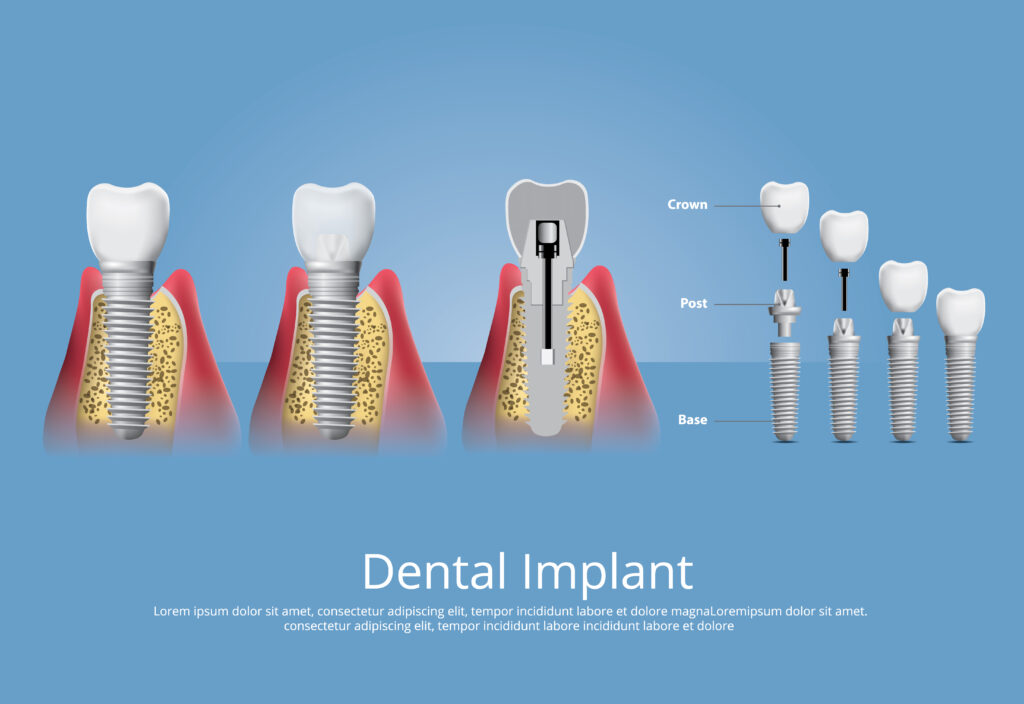
Introduction
Basal dental implants represent a revolutionary advancement in modern dentistry, particularly for patients experiencing severe bone loss. Unlike conventional implants that often require bone grafting or sinus lifts, basal implants offer a minimally invasive, faster, and more effective solution for restoring both the function and aesthetics of natural teeth.
What Are Basal Dental Implants?
Basal dental implants are single-unit implants crafted from a biocompatible titanium alloy. Unlike conventional two-part implants, these are designed as a one-piece structure, where the implant and abutment are fused together.
This unique design enables immediate loading, allowing patients to regain their chewing ability within just a few days after placement.
The term “basal implantology” refers to the use of the basal (cortical) bone layer—a dense and stable section of the jawbone—for implant placement. Because this bone layer is naturally strong and regenerative, it provides exceptional stability, making basal implants ideal for immediate dental restorations.
Benefits of Basal Dental Implants
1. Suitable for Severe Bone Loss Cases
Basal implants are specifically indicated for patients with moderate to severe jawbone atrophy. They can be placed even when traditional implants are not possible due to insufficient bone volume.
2. No Bone Grafting or Sinus Lifts Required
Unlike conventional implants, basal implants eliminate the need for bone augmentation or sinus lift procedures, resulting in a simpler, faster, and less invasive treatment.
3. Immediate Functionality
One of the greatest advantages of basal implants is immediate loading—patients can begin using their new teeth within 72 hours of implant placement. This drastically reduces downtime and enhances quality of life.
4. Minimally Invasive Placement
The procedure for basal implants is less traumatic compared to traditional implants. This means less pain, minimal swelling, and faster recovery for patients.
5. High Resistance to Infections
The polished titanium surface of basal implants helps prevent plaque buildup, significantly lowering the risk of peri-implantitis and other oral infections.
6. Suitable for High-Risk Patients
Thanks to their unique design and anchorage in the cortical bone, basal implants are ideal for patients often considered unsuitable for conventional implants — including smokers and diabetics.
Steps for Immediate Loading of Basal Dental ImplantsDay 1: Assessment and Implant Placement
The process begins with detailed diagnostics such as X-rays or 3D scans to assess bone structure and plan the treatment.
Under local anesthesia, any compromised teeth are extracted, and basal implants are placed directly into the cortical bone.
Soft and hard tissues are adjusted for a stable base, and impressions are taken to start the prosthetic framework in the dental lab.
Day 2: Framework Construction
A metal framework for the prosthetic is designed and fabricated.
Patients can preview the size, shape, and alignment of their future teeth. Any necessary adjustments are made before finalizing the structure.
Day 3: Final Prosthetic Construction and Placement
The ceramic component of the prosthetic is completed and fine-tuned for function and aesthetics.
Once approved, the final construction is permanently fixed, restoring a beautiful, functional smile and full chewing capability.
Is the Permanent Reconstruction Always Done in 3 Days?
While many patients receive their permanent restoration within 72 hours, others may opt for temporary teeth—especially if multiple extractions are needed.
Temporary restorations allow soft and hard tissue to heal over 2–3 months, after which permanent teeth are placed for optimal comfort, function, and aesthetics.
Conclusion
Basal dental implants are a groundbreaking solution for patients with bone loss, offering immediate results, minimized surgical intervention, and long-lasting durability. With proper care and follow-up, they provide a reliable path from no teeth to a confident smile in just three days.

